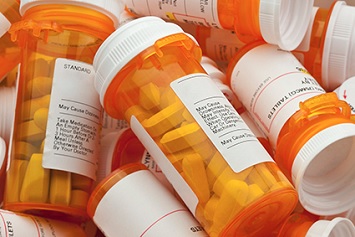In February 2019, the EPA issued a final rule establishing a new set of regulations for the management of hazardous waste pharmaceuticals generated by healthcare facilities. There were several rationales behind the rule. For example, in contrast to staff at industrial facilities, healthcare personnel (e.g., doctors and nurses) are rarely trained to make hazardous waste determinations. Therefore, the EPA agreed with stakeholders that a special set of regulations was desirable so that “healthcare personnel focus on healthcare while still ensuring that hazardous waste is directed to proper management.” While the new regulations (Subpart P of 40 CFR Part 266) are less extensive than the generator provisions in Part 262, some requirements are similar. Manifesting is one provision in the new subpart that is potentially confusing for healthcare facilities and reverse generators.

Here, we provide a list of requirements and other considerations that should be helpful to healthcare facilities manifesting under Subpart P. We also describe a recent EPA memo on Resource Conservation and Recovery Act (RCRA) codes for manifested hazardous waste pharmaceuticals and state requirements.
Compliance Considerations
- The manifesting requirements apply to noncreditable hazardous waste pharmaceuticals, defined as “a prescription hazardous waste pharmaceutical that does not have a reasonable expectation to be eligible for manufacturer credit or a nonprescription hazardous waste pharmaceutical that does not have a reasonable expectation to be legitimately used/reused or reclaimed.”
- Healthcare facilities are not required to use a hazardous waste manifest or a hazardous waste transporter when shipping potentially creditable hazardous waste pharmaceuticals to a reverse distributor.
- The manifesting requirements apply to large quantity generators (LQGs) and small quantity generators (SQGs). Very small quantity generators (VSQGs) are not required to provide manifests for their shipments of hazardous waste pharmaceuticals to an off-site healthcare facility operating under Subpart P provided the receiving healthcare facility meets certain conditions. (VSQGs have the option of complying with the full Subpart P regulations in lieu of operating under the VSQG exemption. This option may be preferred by facilities that do no wish to keep track of the amount of hazardous waste they generate each month.)
- A reverse distributor is any person who receives and accumulates prescription pharmaceuticals that are potentially creditable hazardous waste pharmaceuticals for the purpose of facilitating or verifying manufacturer credit.
- Manifests are required for evaluated hazardous waste pharmaceuticals reverse distributors ship off-site as hazardous waste. (An evaluated hazardous waste pharmaceutical is defined as a prescription hazardous waste pharmaceutical that has been evaluated by a reverse distributor and will not be sent to another reverse distributor for further evaluation or verification of manufacture credit.)
- The healthcare facility or the reverse distributor must ship the manifested hazardous waste pharmaceuticals to a RCRA-designated facility, such as an interim-status or a permitted transfer, storage, and disposal facility (TSDF).
- A healthcare facility must keep a copy of the signed manifest for at least 3 years from the date the shipment was accepted by the initial transporter.
- Healthcare facilities must submit an exception report to the EPA’s Regional Administrator if they have not received a signed copy of the manifest within 60 days of the initial transporter accepting the shipment. The Agency may require a healthcare facility to furnish additional reports regarding the quantity and disposition of noncreditable hazardous waste pharmaceuticals. The facility must keep a copy of any exception report for at least 3 years from the date of the report.
Waste Codes
The February 2019 final rule allowed that, in lieu of including all applicable waste codes on the manifest, a healthcare facility must include the 6-letter word PHARMS in item 13 of the manifest. The EPA assumed that facilities would use the Agency’s electronic manifesting (e-Manifest) system when shipping hazardous waste pharmaceuticals. The Agency subsequently learned that most facilities are still using paper manifests, which allow for only four-character waste codes. The Agency also found that the databases used by some states and industry stakeholders are not designed to accommodate six characters, which makes it difficult to exchange data with the e-Manifest system.
Accordingly, in its memo, the Agency states that it is allowing the use of a four-character code—PHRM—or the PHARMS code on both paper and e-Manifests.
The memo also indicates that nothing prevents a healthcare facility from including specific waste codes on the manifest, in addition to PHARMS or PHRM.
“Including all applicable RCRA hazardous waste codes on the manifest when shipping non-creditable hazardous waste pharmaceuticals could help the receiving facility better understand the wastes and determine the best course of management,” states the Agency, which adds:
“In addition, we recommend for manifested non-creditable hazardous waste pharmaceuticals shipped from a healthcare facility operating under subpart P but passing through a state or going to a TSDF in a state that has not yet adopted subpart P, that the healthcare facility/vendor check with those states regarding whether they require all applicable waste codes to be on the manifest. Further, the regulated community should be aware that as authorized states adopt and become authorized for part 266 subpart P, it is possible that they may choose to be more stringent and require all hazardous waste codes when healthcare facilities manifest non-creditable hazardous waste pharmaceuticals.”
